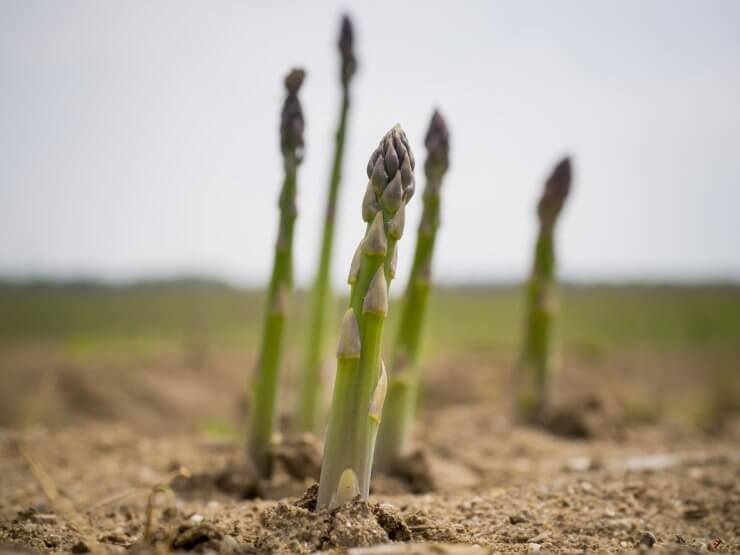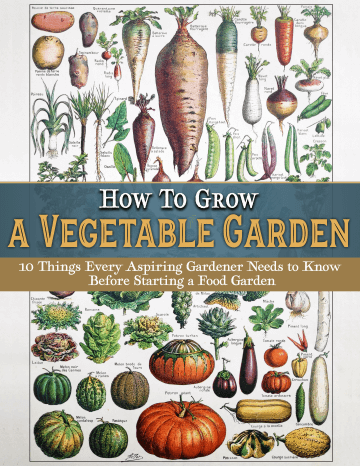
You read that right. Even though there are lots of vegetables and herbs that complement one another in the garden, there are some vegetables that should not be planted together. Ever. They’re like the opposite of corn, beans, and squash. Or if we were to allude to popular culture, growing some of these vegetables together would be like asking Batman and the Joker to be neighbors. Or Jim Halpert and Dwight K Schrute. It wouldn’t be pretty.
There are some excellent reasons to keep certain plants apart. For example, they compete for the same nutrients sometimes. Or taller plants might shade shorter ones from much-needed sunlight. In fact, that’s a good place to start planning your garden and thinking about vegetables that should not be planted together.
Discover 10 top tips for growing, harvesting, and enjoying fruits, vegetables, herbs and more from your home garden—when you access the FREEBIE How to Grow a Vegetable Garden, right now!
Generally speaking, it’s best to keep plants with similar needs in the same area. So you wouldn’t want to plant leaf lettuce (which needs regular water) and black-eyed peas (which like dry conditions) too close to each other.
At the same time, you can strategically plant vegetables with differing sunlight preferences next to one another. For example, tomatoes enjoy plenty of bright sunlight, and their height can keep spinach happy in the shade.
Even so, some plants are out to get each other.

Vegetables that should not be planted together (and some herbs, too)
1. Tomatoes and corn. This combo is great in the kitchen. I could happily eat fresh corn and heirloom tomato salads every day in August. In the garden, however, the deep roots of these two vegetables compete with one another for the same nutrients. Add to that the tomato hornworm is also fond of corn, and you’re just asking for pest trouble.
2. Asparagus and potatoes. Here’s another example of two vegetables that should not be planted together because they compete for the same nutrients in the same space.
3. Beets and pole beans. While beets can grow in partial shade, they do enjoy some lovely, bright sunlight. Pole beans, however, tend to cast quite a bit of shade as they climb a trellis.
4. Cucumber and sage. Sage and other herbs like basil and can deter many garden pests. However, many aromatic herbs are said to inhibit the growth of cucumber plants.
5. Beans and garlic? This is a common pair of vegetables that should not be planted together. Or is it? Even though there are a lot of sources stating these two don’t work well together, there is some evidence that they do, in fact, complement one another. A study published in 2018 found that beans and garlic absorbed and used more nitrogen when planted together than when planted alone.
6. Carrots and parsnips. Because these two vegetables are in the same family, they attract the same garden pests.
7. Fennel and…. every other vegetable? Poor fennel! No one seems to enjoy growing near fennel in the garden. The only possible companion I’ve seen mentioned for fennel is dill, and even that’s up for debate.
With so many possible beneficial combinations, it shouldn’t be too difficult to find something that works. But these combinations are a definite garden failure.
Do you have other combinations of vegetables that should not be planted together? I’d love to read your thoughts in the comments.





Aha! I found out that tobacco carries the Mosaic virus that is harmful to tomato plants and can turn leaves yellow. Mine died one year from someone else who touched them-someone who smoked. And , don’t we all find out the hard way about certain plants, I know I have! Great writing in Green Prints!
This is very interesting! I once heard that people who smoke tobacco shouldn’t touch tomato plants, that tomatoes do not like or will react to the tobacco. Do you know this to be true? But we don’t pant outside anymore so I’m not worried about it. I just wanted to know if this was true. Amanda, I do enjoy your writing, keep up the great work… and next time, flip that T-bone in my direction, oh yum!
Can tomatoes and peppers be near each other when they are in separate pots?
There should be no problem planting tomatoes and peppers near each other. Just make sure there is some space for good air flow.
Blackberries (and maybe other climbing berries in same ‘family’) cannot be planted in proximity to any of the nightshade plants. I found this out the hard way, when my tomatoes failed next to my new blackberry. Did some deep research and found this is a no no.
Thank you!